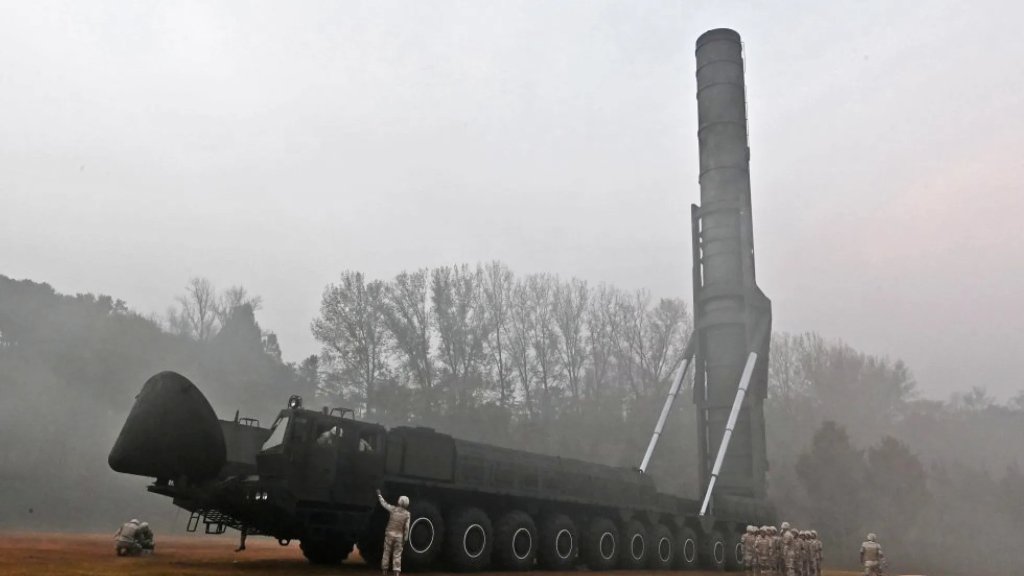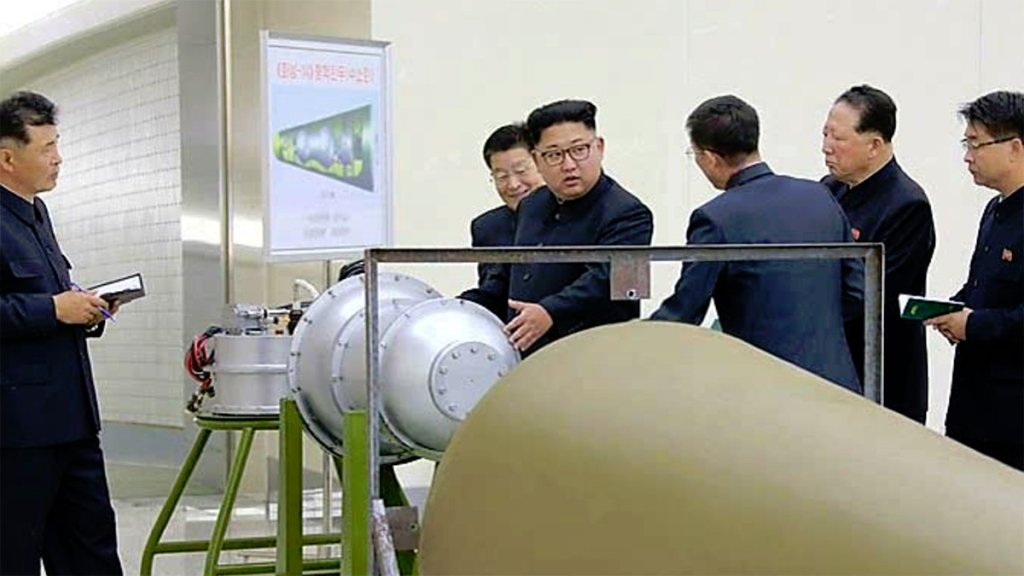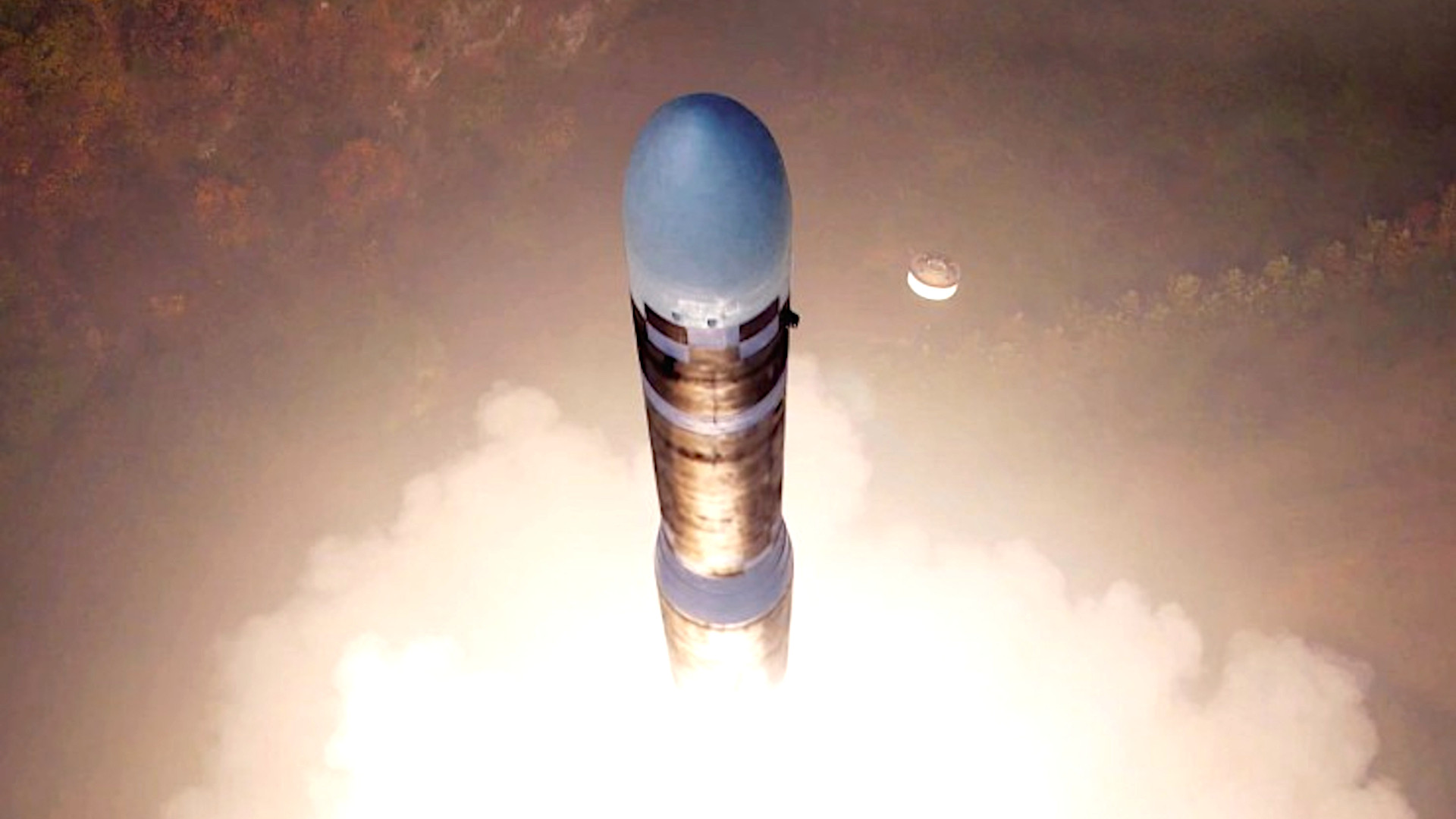The U.S. military has not seen demonstrable evidence of North Korea successfully testing a re-entry vehicle capable of bringing a nuclear warhead back down to Earth through the atmosphere, according to America’s top officer in the Pacific region. The North Koreans are actively working on this technology, which is essential for long-range ballistic missiles with exo-atmospheric flight profiles, especially intercontinental ballistic missiles (ICBM) able to reach the United States.
“All will have been aware by now that North Korea tested its largest ballistic missile, having reached an apogee of over 7,000 kilometers [approximately 4,349.5 miles], portending a capability that will have the ability to range the entire continental United States,” U.S. Navy Adm. Samuel Paparo said in opening remarks at an open event at the Brookings Institution think tank yesterday.
Paparo is head of U.S. Indo-Pacific Command (INDOPACOM) and was referring to North Korea’s first test launch of the Hwasong-19 intercontinental ballistic missile (ICBM), claimed to be its longest-ranged design to date, on Oct. 31. North Korean authorities said the missile reached a peak height of 7,687.5 kilometers (approximately 4776.8 miles).

“Do we know much about the North Koreans’ ability to bring a re-entry vehicle safely back through the atmosphere and whether they would themselves have any confidence that they could do that?” Michael O’Hanlon, a senior fellow and director of research in the Foreign Policy program at Brookings, subsequently asked Paparo. “Because it’s one thing to range North America. It’s something else to be able to bring a warhead [down] and detonate it.”
“Not yet. We’ve not yet seen that capability, but we just see continued testing towards that,” the INDOPACOM commander said in response.
Designing a re-entry vehicle that can survive the physical and thermal stresses of hurtling down to Earth through the atmosphere at hypersonic speeds is a complex proposition. That vehicle also has to be able to keep any payload, such as a nuclear warhead, inside safe and be reliably and accurately able to reach the desired detonation point, which only adds to the challenge.

There is no debate that North Korea has been actively pursuing re-entry vehicle technology, which is critical for fielding a real ICBM capability, for years. The regime in Pyongyang has claimed to have successfully developed this capability in the past and to have progressed to work on multiple independently targetable reentry vehicles (MIRV). Observers have suggested that the Hwasong-19 has the hallmarks of design intended for a MIRV payload.

A MIRVed missile could strike multiple targets, potentially hundreds of miles apart, and/or lob several warheads at a single target area to increase the likelihood of achieving total destruction. Multiple incoming re-entry vehicles increase the challenges for defenders, especially if they are mixed in with decoys and other countermeasures.

Paparo’s comments yesterday underscore that there remains no definitive evidence available, at least publicly, to support North Korea’s re-entry vehicle claims.
At the same time, it is important to stress here that North Korea could still potentially at least attempt an ICBM strike against the United States, or a similarly ranged target area, without having a re-entry vehicle capability that the U.S. military has conclusively assessed to be functional. It could also seek to cause a massive global disruption by detonating nuclear warheads in space, something The War Zone has explored in the past.
“The U.S. Central Intelligence Agency (CIA) has assessed that North Korea’s Hwasong-14/KN20 intercontinental-range ballistic missile (ICBM) test launch on July 28[, 2017] failed to demonstrate successful atmospheric reentry,” The Diplomat reported back in 2017, citing anonymous U.S. government sources. “The same assessment, however, notes that North Korea’s ICBM reentry vehicles would likely perform adequately if flown on a normal trajectory to continental U.S. targets.”
The video below includes clips of the Hwasong-14 launch on July 28, 2017.

“The CIA assessment notes that based on the two observed flight tests of the Hwasong-14 to date, North Korea’s reentry vehicle technology is likely sufficiently advanced to pose no performance problem should the missile be fired at a minimum energy trajectory,” that story added. “The assessment of the reentry vehicle is supported by analysis of data ‘gathered from ground, sea, and air-based sensors’ by the U.S. National Air and Space Intelligence Center (NASIC).”
In his remarks yesterday, Paparo also highlighted growing military cooperation between North Korea and Russia and the worrisome impacts that might have in the future.
“So North Korea has contributed [ballistic] missiles … directly used [by Russia] against Ukraine. They have contributed artillery shells that have been directly used against Ukraine. Now they have directly contributed soldiers … [and] they’re being directly used against Ukraine,” Paparo noted. “I would expect coming back will be submarine technology and propulsion technology.”
News that North Korea had started construction of a new submarine, which could feature nuclear propulsion, had emerged in October. Last year, the North Koreans also formally unveiled a heavily reworked Cold War-era Romeo class diesel-electric submarine modified to fire ballistic missiles, seen below.

The War Zone has pointed out in the past that re-entry vehicle technology, something Russia has significant experience with, could well be something else North Korean authorities might seek in return for their support in the ongoing fighting in Ukraine. The Russians also possess other missile technology that could feed into North Korean developments.
“At this point, it’s very early in … our assessment phase, and we don’t see any indication at this point that there was Russian involvement,” U.S. Secretary of Defense Lloyd Austin said at a press conference alongside Secretary of State Antony Blinken, as well as their respective South Korean counterparts, on Oct. 31. “But again, we’ll continue to work with our partners and our allies in the region to analyze this.”
North Korea also has close ties to China and Iran, who both have very active ballistic missile programs.
Over the past decade or so, North Korea has conducted tests of a significant number of new liquid and solid-fuel ballistic missiles, including multiple ICBM designs, as well as hypersonic and long-range cruise missiles. This further includes types that North Korean officials say are capable of carrying nuclear warheads, something the country also looks to be stepping up production of. The Hermit Kingdom has also demonstrated its ability to fire ballistic missiles from a wide array of static and mobile launchers, including ones emplaced at the bottom of lakes and rail-based systems.
As underscored by the Hwasong-19 test, North Korea’s missile and nuclear weapons programs continue to be very active. Though Paparo said the U.S. military has not seen evidence of a successful demonstration of re-entry vehicle capability, the North Koreans are clearly pushing ahead toward that goal.
Contact the author: joe@twz.com
